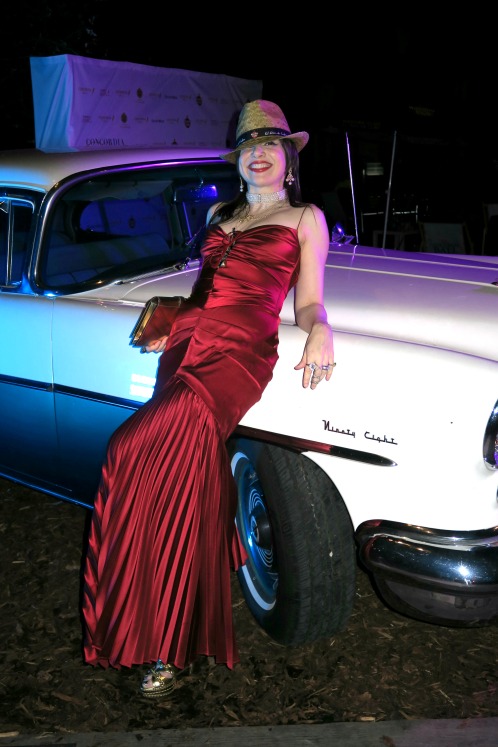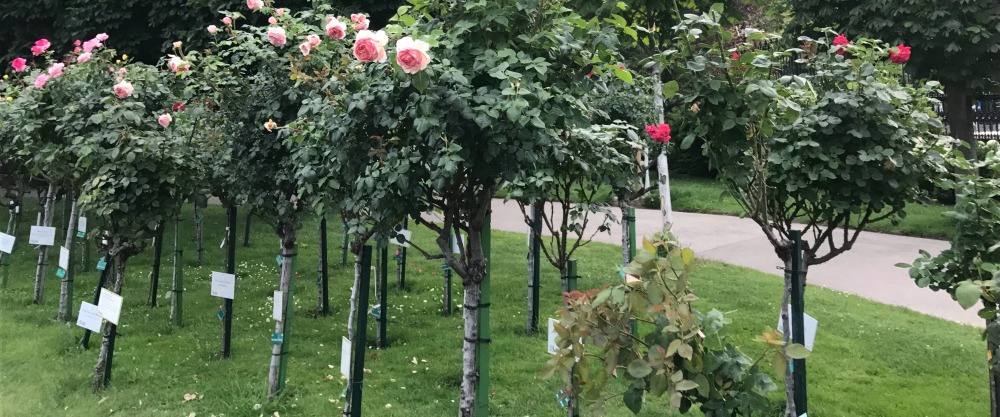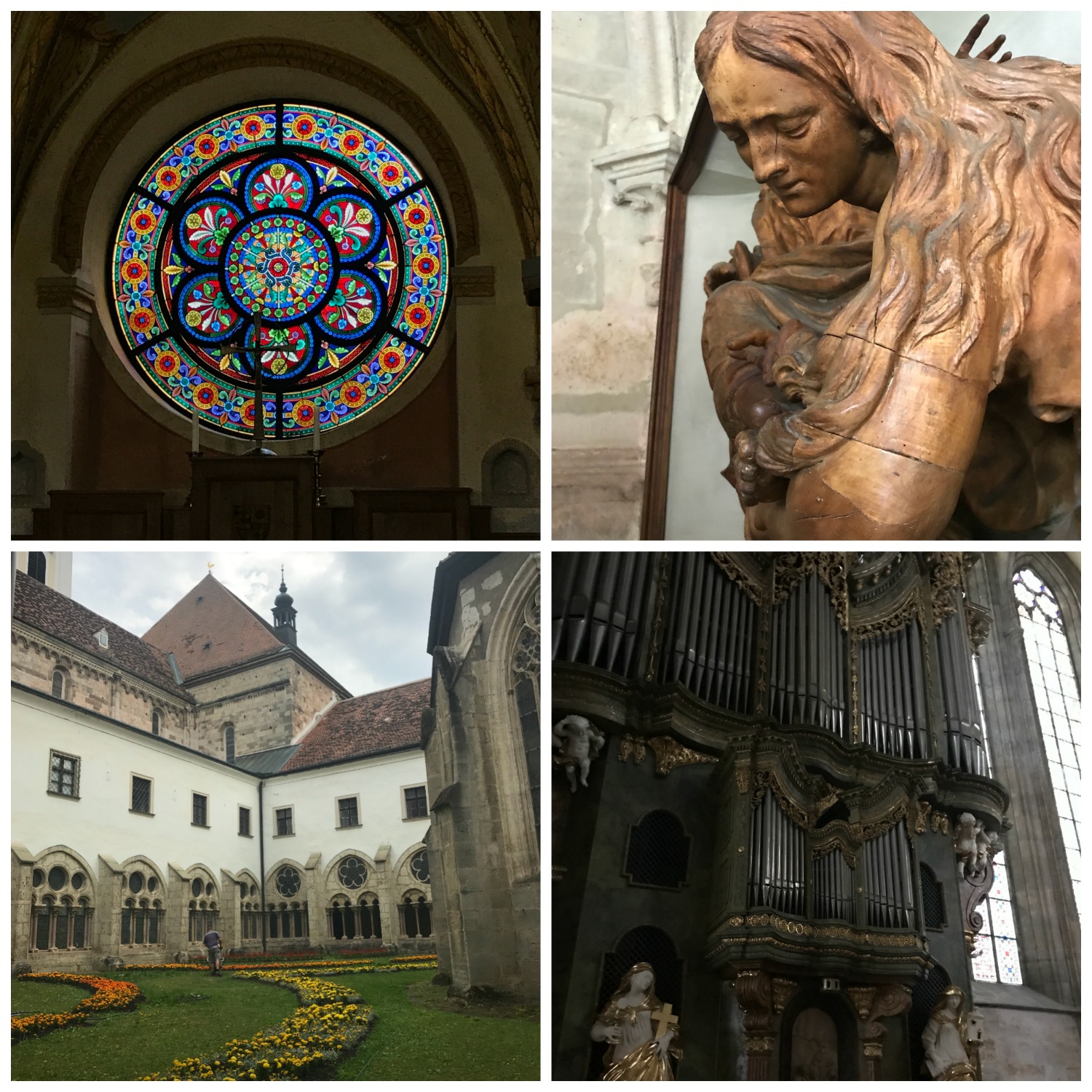After a few days in Paris in June, MrB and I went to Bonn, Germany, where MrB was taking part in the Global Media Forum. I attended a panel he did about Trump and the media, and live-tweeted it; check out his description of the way in which Trump differs from Nixon.
Then we went to Vienna for the Global Editors Network Summit. (I was serious when I said MrB was working everywhere!) The location of the GEN Summit changes every two years, and this was the second year in Vienna. Last year, attendees were invited to a traditional Viennese ball.
This year there was no extremely formal event, but I was pleased I got to do some sightseeing I missed last time. We visited the famous rose garden within the Volksgarten…
… where I paused to pinch a flower.
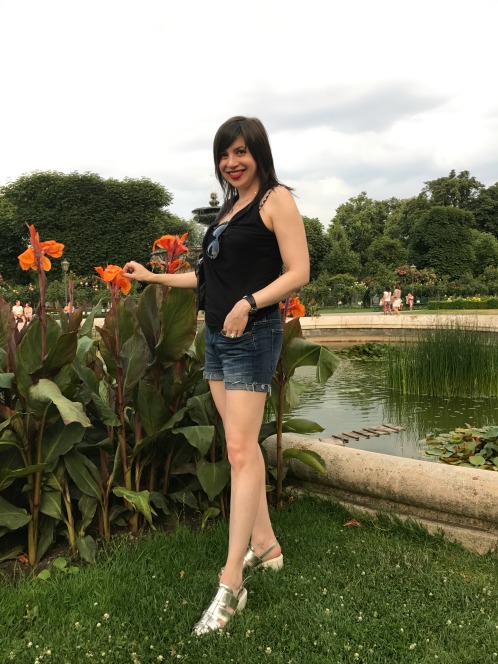
Click for my previous flower-pinching adventures. P.S. to Brits: I mean, I literally PINCH the flower with my fingers. I don’t steal it!
On another day, I left MrB to his work and took a bus tour to the Seegrotte, which is a former gypsum mine that flooded to create Europe’s largest underground lake. You have to walk down some slippery pathways (with a guide) to get to the short boat ride on the water, and it’s as dark as you’d imagine, but if you’re okay with those things, I highly recommend this. It was pleasantly spooky.
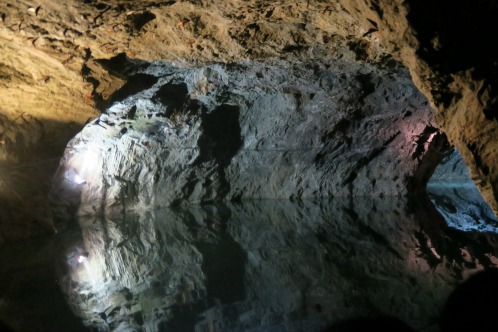
On the water in the Seegrotte.
Before we got to the lake, we got a tour of Heiligenkreuz Abbey, a monastery founded in 1133.
We also went to Mayerling. In 1889, it was a hunting lodge where 30-year-old Crown Prince Rudolf, the heir to the Austro-Hungarian throne, shot himself and his 17-year-old mistress, Baroness Mary Vetsera. The royal family was desperate to cover up the tragedy (in part because Rudolf wouldn’t be permitted a Catholic burial if he was acknowledged to be a suicide) and it was only two years ago that Mary Vetsera’s suicide notes were discovered in a bank vault, proving she willingly entered a suicide pact with the man she adored. Rudolf would have preferred to depart this life with the mistress he really loved, Mizzi (or Mitzi) Kaspar, but she declined his offer. Reportedly, he had also suggested a dual suicide to his estranged wife, Crown Princess Stephanie, which she conveyed to his father, Emperor Franz Joseph, who monitored Rudolf for a while. Rudolf had a complicated love life.
A chapel was built where the prince’s bedroom was. The altar is said to be positioned in the exact spot where the bed — on which the bodies of Rudolf and Mary were found — had been.
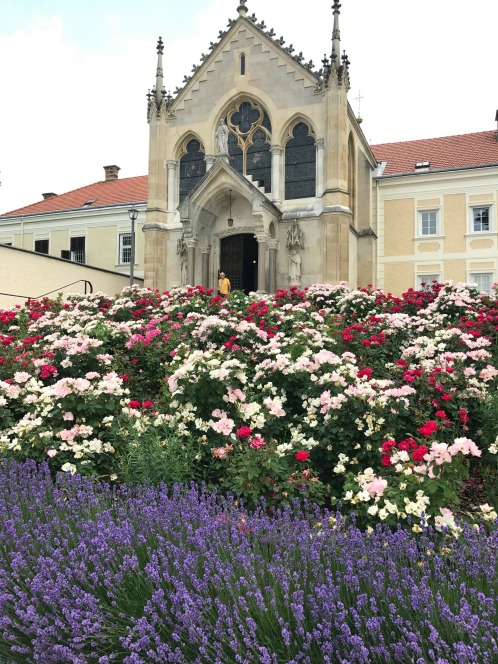
Mayerling: Beautiful and macabre.
A related stop that I made in Vienna itself was the Sisi Museum, dedicated to Prince Rudolf’s tragic mother, Empress Elisabeth, aka Sisi. Elisabeth enjoyed an idyllic childhood in Bavaria, but her carefree days came to an abrupt end in 1853, which is when she accompanied her mother and elder sister to Austria to meet the 23-year-old Franz Joseph. He was supposed to propose to Sisi’s 18-year-old sister, Helene, on that occasion. Instead, he fell madly in love with his younger cousin (Franz Joseph’s and Sisi’s mothers were sisters). Not having a lot of choice in the matter, Sisi was married to Franz Joseph when she was only 16. Her immediate struggles with the restrictions of life as a teenage empress are eerily like those of England’s Princess Diana over a century later: The protocol was too rigid, her husband too staid, and her mother-in-law too dominating. In fact, her mother-in-law basically snatched the first of Sisi’s four children away from her and named the baby “Sophie” after herself. When Sophie died of an illness at two, Sisi became even more depressed. She grew to hate being stared at and withdrew from public life, yet obsessed over her appearance — exercising to an extreme; dieting constantly; putting hours into tending her fabulously long hair; requesting custom cosmetic treatments and medication. She poured her depression into mournful poetry and (on the plus side) supported often unpopular charities and causes.
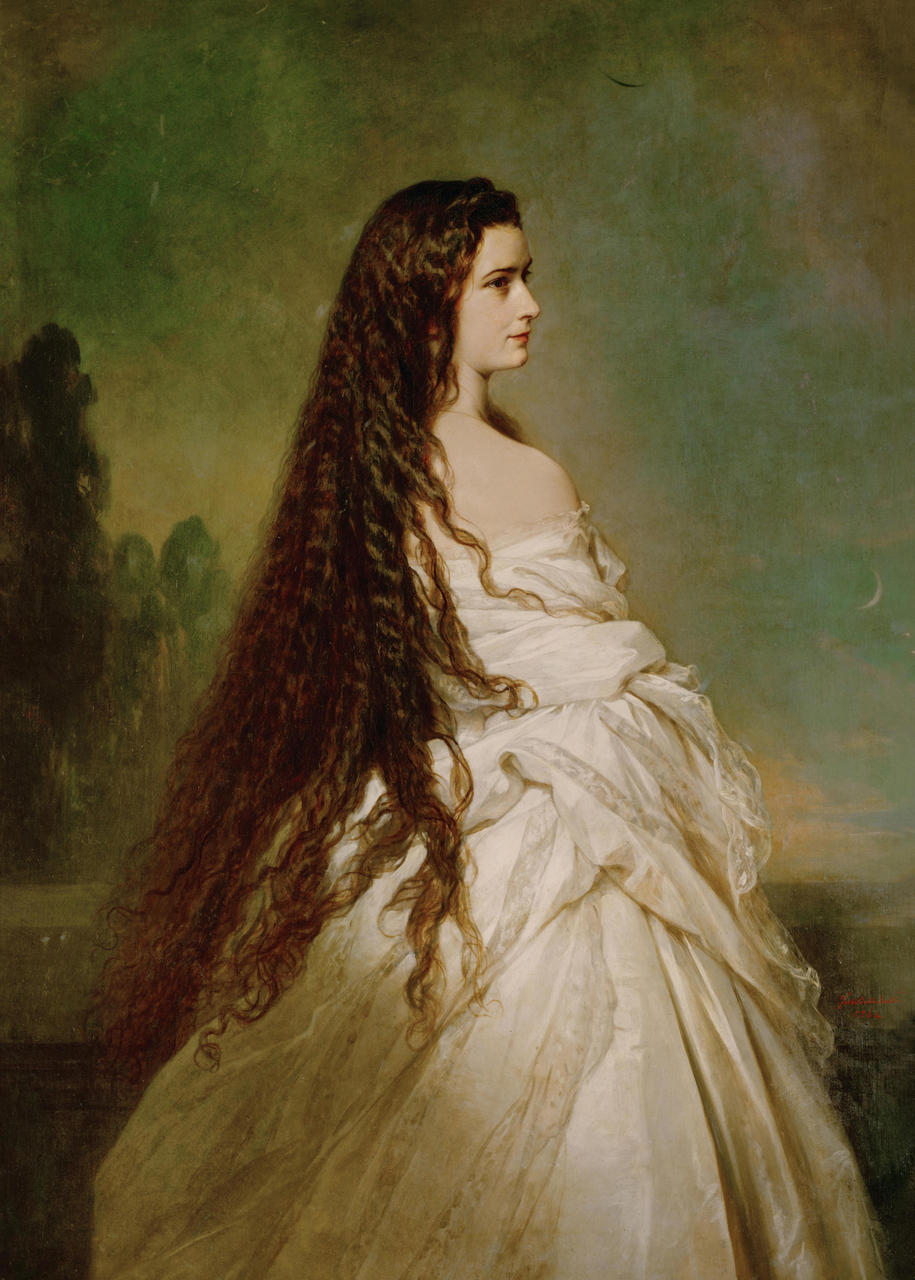
Sisi’s famous long hair.
After decades of misery came Rudolf’s suicide. At that point, Sisi couldn’t bear Austria any longer, so she left the emperor to his own devices and traveled incessantly, by boat and train. In 1898, she was in Geneva; so was an anarchist named Luigi Lucheni. Lucheni was planning to assassinate Prince Henri Philippe Marie d’Orléans as an anti-royal statement, but when the prince canceled his Geneva visit, Lucheni turned his attention to Sisi. As she was heading back to her boat one night, he slammed into her and stabbed her in the heart with a sharpened file. The wound was so small that she didn’t know she had been stabbed. She got up, thanked people for helping her, and proceeded to the ship, where she collapsed. She was taken back to shore but died of internal bleeding at age 60.
The museum stressed that unlike Princess Diana, it was only upon Sisi’s death that the empress became a romantic cult figure. While she was alive, royal censorship of the media allowed the family to keep their black sheep hidden. But after her murder, she was monarchist propaganda — a woman forever young and beautiful, doted upon by an adoring emperor. She’s since been portrayed that way in movies (including by Ava Gardner!), opera, theater, ballet, television, and books.
Of course, I’m all about tragic royal women (I love the non-tragic ones too), and I’ve wanted to create Sisi jewelry since my first visit to Vienna in 1999/2000. The interesting thing about that desire is that I didn’t get into the jewelry business until 2005. It’s similar to the way I was enthralled by Anne Boleyn’s story and, along with it, Anne’s big “B” pendant, when I was a child. I always wanted that necklace.
Sisi’s iconic jewelry was her collection of 27 diamond-and-pearl star-shaped pins. The most famous portrait of her shows her wearing some of them in her extraordinarily thick hair.
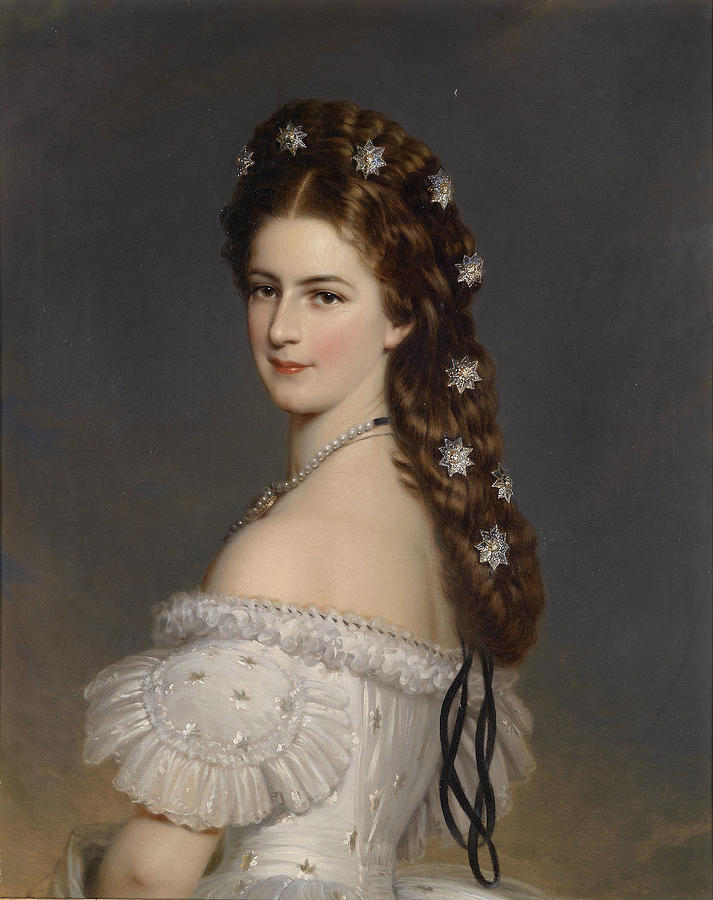
Sisi’s stars in her hair.
As with the Boleyn necklace, I don’t want to do the kind of reproduction jewelry that can be found in museum gift shops and airports (I bought a crystal Sisi hairpin for my four-year-old niece). I have to interpret the design my own way. My Sisi jewelry tribute might not include stars at all. I’m still mulling over various ideas. Hopefully, I’ll be inspired after I finish reading the Sisi biography I bought at the museum. Believe it or not, all the information I already have on Sisi isn’t enough. I always need at least one book on my jewelry-inspiring royal women!
Tomorrow, I’ll finish up my European summer-travel posts with two outfits worn in Vienna.
